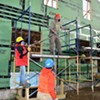Switch to the mobile version of this page.
Vermont's Independent Voice
- News
- Arts+Culture
- Home+Design
- Food
- Cannabis
- Music
- On Screen
- Events
- Jobs
- Obituaries
- Classifieds
- Personals
Browse News
Departments
-
Education

Scott Official Pushes Back on Former State…
-
News

Burlington Budget Deficit Balloons to $13.1 Million
-
Education

Senate Committee Votes 3-2 to Recommend Saunders…
- Court Rejects Roxbury's Request to Block School Budget Vote Education 0
- Norwich University Names New President Education 0
- Media Note: Mitch Wertlieb Named Host of 'Vermont This Week' Health Care 0
Browse Arts + Culture
View All
local resources
Browse Food + Drink
View All
Browse Cannabis
View All
-
Culture

'Cannasations' Podcaster Kris Brown Aims to 'Humanize'…
-
True 802

A Burlington Cannabis Shop Plans to Host…
-
Business

Judge Tosses Burlington Cannabiz Owner's Lawsuit
-
Health + Fitness

Vermont's Cannabis Nurse Hotline Answers Health Questions…
-
Business

Waterbury Couple Buy Rare Vermont Cannabis License
Browse Music
View All
Browse On Screen
Browse Events
Browse Classifieds
Browse Personals
-

If you're looking for "I Spys," dating or LTRs, this is your scene.
View Profiles
Special Reports
Pubs+More
Cottages Industry: The Housing Crisis Complicates Hiring, Forcing Employers to Become Realtors and Builders
Locked Out Series, Part 3
Published April 27, 2022 at 10:00 a.m. | Updated December 6, 2022 at 8:06 p.m.
As HR manager at Stone Environmental, Joanne Perry has become adept at helping new hires find their way around Vermont's tight housing market. When the Montpelier-based company offered GIS specialist Paige Gebhardt a job in December, Perry advised her to start searching right away.
With her April start date approaching, Gebhardt, who had been living in Texas, was still looking. So Perry connected Gebhardt with a Stone Environmental employee who had talked about getting a housemate. Now Gebhardt, 27, and her cat, Louie, are bunking in her new coworker's spare bedroom in an East Montpelier farmhouse.
About this Series
Seven Days is examining Vermont's housing crisis — and what can be done about it — in our Locked Out series this year. Send tips to
[email protected].
These stories are supported by a grant from the nonprofit Journalism Funding Partners, which leverages philanthropy and fundraising to boost local reporting. For more information, visit jfp-local.org.
After 18 years at the 50-person environmental consulting company, Perry jokes that she is the office mom, and she manages an array of tasks.
"Now I'm also a house-finder," she said.
She's not alone. The astronomical prices of Vermont real estate have thrust employers into the often awkward role of arranging housing for prospective workers who can't find or afford a place to live. The price of housing, a longtime challenge for seasonal businesses such as ski areas and farms, now bedevils businesses and nonprofit agencies across Vermont's economy. That threatens companies' expansion plans as well as wider efforts to reinvigorate local economies in communities around the state.
Employers — many of whom were already having trouble finding workers — are getting creative.
The University of Vermont Medical Center and Middlebury College plan to build new apartment buildings; Bolton Valley Resort is studying the idea. Some businesses are working closely with real estate agents to snatch up apartments — before they are even listed.
An Upper Valley group is raising money from private companies to build new homes. Farms are getting involved in a pilot state program to replace aging mobile homes with high-quality modular housing. Ski areas are converting rooms usually reserved for guests into workers' quarters and buying up nearby motels for them, too.
Vermont's housing shortage has been decades in the making. But the pandemic sharply increased demand when out-of-staters fled cities for the Green Mountains. The buying spree caused intense competition for housing, coupled with a historic run-up in rents and home prices.
"Last year, we approached a tipping-point moment, where we were starting to see newly graduated nurses accept our offers of employment, and then they wouldn't be able to secure housing and they would withdraw their acceptance," said Carolyn Isabelle, the director of workforce development at Dartmouth Health in Lebanon, N.H. A quarter of the medical center's 10,000 workers live in Vermont.
In January, two people who had accepted job offers from Northeastern Vermont Regional Hospital in St. Johnsbury changed their minds due to the difficulty of finding places to live, said hospital CEO Shawn Tester. Like many hospitals, his faces a worker shortage.
To fill gaps, the hospital is using temporary traveling nurses, but they, too, need places to stay. Tester recently found housing for seven of them in an unoccupied dorm at nearby Lyndon Institute. His wife, who is on the board of the private high school, gave him the idea.
"If you ever asked me if I'd be this involved in workforce housing when I became the CEO of the hospital, I would never have imagined it, but here we are," Tester said. "You do what you have to do."
Blueprint for Stagnation
click to enlarge 

- Daria Bishop
- Roland Groeneveld (left) and Dave Anderson at OnLogic in South Burlington
What Vermont has to do is create housing that workers can afford — or the economic consequences will be deeply felt. That's the assessment of Gov. Phil Scott and officials in his administration who are trying to direct federal COVID-19 relief money toward housing initiatives not only for low-income Vermonters but for what policy makers call the "missing middle": those who earn too much to qualify for subsidized housing yet can't afford a home in the overheated market. Without working-age residents, Scott said in an interview, communities can't grow and thrive. In fact, they can wither.
"We have to pay attention to the affordability of the state," said Scott, noting that housing isn't the only factor hindering economic growth in Vermont, but it is one of the most important. "We have to pay attention to the business community so you don't lose the Betas," he said, referring to electric aviation company Beta Technologies, based in South Burlington. "They want to be in Vermont. But there will come a point where they say, 'It's just not worth it. You don't have what we need, and you're making it much too difficult to set up shop.'"
The threat of gentrification looms over Vermont. In Chittenden County, working families have increasingly been priced out, and even new hires who landed attractive white-collar positions can struggle to compete in the housing market. Last year, Dave Anderson took a job as CFO for South Burlington-based OnLogic. The company, which has 200 employees, manufactures rugged personal computers engineered for harsh environments, such as the outdoors. Anderson and his wife, who have a baby, started planning their move to Vermont from Tewksbury, Mass., in advance of his February 1 start date. Anderson hoped to buy a home within a half-hour commute of his new office.
The couple looked at about two dozen houses and made several offers. They wanted three or more bedrooms and a bit of land.
"We learned pretty quickly that what we wanted was in high demand," Anderson said. Knowing the real estate market was red-hot, they always bid more than the asking price — initially, 10 percent over, and later, 20 percent. But other buyers consistently outbid them.
The couple had to rent a home in Ferrisburgh, where they still live, though they closed on a three-bedroom home in Westford last Friday.
The house is a 36-minute drive from Anderson's office. Like many home buyers nowadays, he and his wife bought without getting a home inspection. Financing that made things easy for the seller also helped seal the deal.
"I am extremely grateful," he said. "I know there are a ton of people out there still going through this challenge every weekend, looking at houses, taking a risk on which ones to put an offer on, waiving contingencies and still coming out the other end without a house."
The situation frustrates OnLogic cofounder Roland Groeneveld, who would like his employees to be able to live close to company headquarters. Groeneveld blames the housing shortfall partly on local zoning regulations, which the South Burlington City Council recently made more restrictive in the town's southeast quadrant.
OnLogic is scheduled to break ground in early summer on a $50 million industrial building in South Burlington. Groeneveld said he wants the company to stay in Vermont.
Despite the expansion, OnLogic has been shifting its focus lately to an office the company opened in October in Cary, N.C., where it's been easier to find workers. Vermont's housing situation is so tough, Groeneveld said, that OnLogic will probably divert future growth to North Carolina. Communities there do a better job of building homes, he said.
"There are these big neighborhoods being developed, and it looks really nice, not cookie-cutter," Groeneveld said. "They're doing a lot of landscaping. Over here, it feels like there are not a lot of opportunities being created or allowed."
Twincraft Skincare, a company that employs 340 people at three plants in Winooski and Essex Junction, also indicated that Vermont's housing shortage has impeded hiring.
"What is limiting our growth is the number of employees we can hire," said Michele Asch, the company's VP of leadership and organizational development.
"We've made a decision not to sell the company and to keep it here in Vermont," Asch said. "But in order to expand, our growth will likely have to take place outside the state."
Looking for housing?
Are you having trouble finding affordable housing? Check out Seven Days' Vermont Housing Resources Guide, which lists public and private organizations that help qualifying Vermonters find shelter and rent, purchase and maintain homes.
The housing crisis and its economic ripples are felt outside Chittenden County. The Mad River Valley Housing Coalition reported last year that housing problems were the No. 1 reason for the worker shortage in the valley, which is home to the Sugarbush Resort and Mad River Glen ski areas. Even before the pandemic, half of the valley employers who responded to a 2016 survey said the housing shortage was hurting business.
The housing crisis doesn't just deter hiring; it helps keep Vermont's population gray as lower-earning young people are frozen out. Fewer babies are being born in the state, which could lead to fewer people entering the workforce. An aging population pressures state revenues, since seniors tend to pay lower taxes. A lack of workers equals a lack of economic vitality.
For now, many employers who don't have comprehensive housing solutions seek smaller ones — one hire at a time.
Randi Lowe, superintendent of the Bennington Rutland Supervisory Union, issued a plea for housing on Facebook in March after a teacher from Iowa turned down a job because she couldn't find an affordable rental. The Bennington Banner wrote a story about it, and property owners started calling. The Iowa teacher found a rental in Sunderland and took the job after all.
"I went into this from a place of desperation and creativity," Lowe said.
Jax Willey, a recruiter for Orion Global Talent in Derby who finds candidates for Vermont manufacturers, saw a prospective hire from North Dakota reconsidering the move to Vermont as his housing search lengthened. Willey called her aunt, who had recently inherited a home in the Northeast Kingdom town of Holland and only used the place on weekends.
"She ended up renting it out for $1,200 a month," Willey said.
Housing Crisis Mode
click to enlarge 

- Steve Legge
- Shawn Tester on the land that Northeastern Vermont Regional Hospital owns in St. Johnsbury
While companies such as Facebook and Apple have pledged to invest billions in affordable housing for workers, similar efforts starting up in the Green Mountain State are on its typically smaller scale.
Middlebury College announced on April 8 that it will buy land and work with a developer on 100 units of housing for the public near campus. Northern Stage, a theater company in White River Junction, plans to build 15 apartments for employees on land it purchased in March. Cabot Creamery has discussed plans to use land that it owns in Cabot to build housing.
UVM Medical Center plans to spend $2.8 million to build 61 apartments that would be reserved for its staff for at least 10 years. And Vail Resorts, which owns the Stowe, Okemo and Mount Snow ski areas, announced on April 11 that it's going to buy a property in Ludlow to house 30 Okemo employees.
Company housing presents inherent conflicts, said Nancy Owens, copresident of Evernorth, a nonprofit housing organization that works in Maine, New Hampshire and Vermont.
"What happens when the person is no longer employed? What if they are a terrific employee but a lousy tenant?" Owens asked.
And it's difficult to anticipate what type of home a worker wants, noted Tester, the St. Johnsbury hospital CEO.
"Is it condos, single-family homes, townhomes? There's no single profile," Tester said. He'd like hospital employees — whether a mid-career physician with three kids seeking a hobby farm or a young lab technician who is single — to be able to find what they want.
Tester is studying a proposal to work with a developer who would use 80 acres owned by the hospital for a mix of private housing that would be available to all. Details such as potential ownership haven't been worked out, Tester said.
Most companies that have entered into construction or leasing arrangements have some experience in housing, noted Megan Sullivan, vice president of government affairs for the Vermont Chamber of Commerce.
"More and more hospitals are doing this," Sullivan said. "We see these as businesses that have experience with beds. And ski resorts have always had that sort of hotel function, so they have experience in building housing."
Evernorth, the nonprofit housing developer, is working to create a fund with investments by local businesses. The pooled resources would provide long-term, low-interest loans to help finance housing projects. Owens likened it to a social impact investment fund in which investors accept lower returns because the project aligns with a social mission.
"The return is partially financial, but it's primarily the economics of increasing the housing supply in the community," she said. Owens declined to say which businesses are involved, though she said she plans to make an announcement in May.
Owens would like the fund to build homes that would be considered affordable for people earning just 50 to 80 percent of the area's median income, which translates to roughly $15 to $25 an hour. The goal is for those apartments to remain permanently affordable, Owens said.
"There are a couple of things we've done in Vermont that are so spot-on and so right and transformative, and one of them is permanent affordability," Owens said. Under a 1987 law, housing subsidized by Vermont must be permanently affordable to lower-income Vermonters — a goal that is usually enforced by a covenant or deed restriction.
Many employers would be happy to leave the housing planning to groups such as Evernorth, because they're not interested in construction or real estate.
Beta Technologies, which raised more than $743 million for its expansion within the last year, has been hiring at a rapid clip. Beta's chief operating officer, Blain Newton, said the company does feel the impact of the housing shortage; some workers have long commutes or had difficulty securing a place to live. But he doesn't think it has deterred anyone from taking a job there.
The company owns seven cottages that it purchased from the Burlington International Airport, which acquired them as part of its federally funded noise mitigation program. Beta now uses them as short-term housing for newly arrived employees.
But Newton does not expect Beta to venture into the residential construction business.
"We know how to build airplanes," Newton said. "Developing houses is not our core competency."
Funding Injection
Legislators are trying to alleviate the crisis by building more homes. A $37 million housing bond that passed in 2017 resulted in the construction and improvement of 850 new apartments and homes, including accessibility improvements for 60.
As unprecedented federal aid poured into the state during the pandemic, lawmakers boosted investments in 2020 and 2021, devoting around $250 million to housing. The Vermont Housing & Conservation Board has used much of it to help build hundreds of homes and is taking proposals now to build more units, rehabilitate existing ones and improve buildings at manufactured home parks. The money is aimed at mixed-income housing, most of it for low-income renters or purchasers.
Gov. Scott has pushed hard in the legislature this year for proposals that assist not only homeless and low-income Vermonters but the so-called missing middle.
Members of the House and Senate are discussing a budget proposal this week that contains money for housing construction, but not the $70 million that Scott initially requested. The plan includes matching grants of up to $50,000 to employers that provide housing for their workers. Scott has threatened to veto the budget, although not specifically over housing funding.
Putting more money toward middle-income housing would help the state's economy, said Betsy Bishop, president of the Vermont Chamber.
"If you get out beyond Chittenden County, we have lots of manufacturing businesses in very rural areas that employ people at good wages, but people need to live nearby in order to work there," Bishop said. "That's why you are starting to see employers put their brains behind, 'How do we fix the housing problem for our workers?' They need workers. They're being forced to address that because we're not doing it as a policy for middle-income workers."
There's only so much the state can do. Housing construction is still a business, one that is subject to market forces, land-use regulations and neighborhood resistance.
Some local governments are finding ways to step up.
In March, the Woodstock Selectboard approved a plan to pay property owners who convert their short-term rentals into long-term housing. The incentive program that Woodstock is developing is loosely modeled on a new program called Rent Local in the ski town of Big Sky, Mont.
Big Sky is also offering to pay residents if they'll accept a permanent deed restriction on their property that would require one resident of the home — owner or tenant — to work at least 30 hours per week in town. Short-term rentals would be prohibited.
Jill Davies, a housing activist in Woodstock, said she hasn't heard of any other Vermont town that is offering such incentives.
If You Build It
Ski resorts and nearby towns, in remote areas that experience seasonal employment swings, have long struggled to alleviate workers' housing problems. Industry magazine Powder reported in 2017 that housing was reaching crisis levels partly because online vacation rental services were taking homes and apartments off the long-term rental market.
That same year, a Seven Days analysis of Airbnb offerings in Vermont determined that four of the top five communities for listings on the popular short-term rental site were ski towns.
One of those towns was Stowe. The housing shortage there is so extreme that people with jobs in town are eager to live in hotel rooms at the Commodores Inn. Co-owner Bruce Nourjian rents half of his 72 rooms monthly to local workers, many in the restaurant business, and said the rest are in high demand from workers who must otherwise commute from outlying towns.
"The phone keeps ringing," he said.
During the pandemic, housing problems worsened at the family-owned Bolton Valley Resort, too. Resort president Lindsay DesLauriers is now talking to local housing builders, including the nonprofit developer and manager Champlain Housing Trust, about constructing a 50-unit apartment building with dormitory-style rooms, studios, and one- and two-bedroom apartments.
Last year, the resort bought the 15-room Black Bear Inn, which is within walking distance of the ski area's base village, to provide rooms for some of its workers. But that's "a small drop in the bucket of what we think we need, especially in the winter and as we continue to grow in the summer," DesLauriers said.
Bolton's summer workforce of about 120 employees balloons to more than 300 in the winter. Environmental and engineering studies on the project are under way; DesLauriers said she'd love to have the new apartment building in place by the summer of 2023.
"That's my goal, but I wouldn't be surprised if it's a year after, or the year after that," she said. "You never know with this process."
Service workers aren't the only resort staffers having trouble finding places to live. Annemarie Todd, Sugarbush Resort's vice president of human resources, said that a vice president of mountain operations who was hired during the pandemic spent nearly a year searching for suitable housing for his family.
"They were living in employee housing, and they actually had their first baby in employee housing," Todd told Sullivan in a Vermont Chamber podcast. "Every house they looked at and put a bid on, there were bidding wars.
"It was through a lot of networking that they finally found a home they could afford and wanted to be in," Todd said. "It's very hard here in the valley."
Farms, too, have long boarded workers. About 2,000 Vermont farmworkers live in employer-provided housing such as mobile homes, according to a Vermont Housing & Conservation Board study.
"Some of them are sinking into the ground, have roof structures that are compromised, mold and mildew issues, poor if not any ventilation, and continuous maintenance burdens," said Peter Schneider, a consultant with the Vermont Energy Investment Corporation. He's working on a pilot program that would replace aging mobile homes with energy-efficient modular homes.
This year the state launched a program that offers farmers no-interest loans of up to $30,000 to update their existing housing; the loans will be forgiven if the housing is maintained and is used as worker housing for a decade.
VHCB, which released a report on farmworker housing last year, said some lacked functional appliances, space for food storage and septic facilities. One of the biggest problems was overcrowding that makes it difficult to sleep or find privacy.
"This is especially a concern for dairy workers," the report says, "where the need for round the clock operations results in some workers having to sleep while others are working or eating throughout the day or night."
Company Towns
A century ago, it was not unusual for companies to build housing to rent to workers. Railroad sleeping car magnate George Pullman built a 4,000-acre community in Chicago around 1880 that included churches, theaters and other amenities. A moralist, Pullman banned liquor, smoking and dance halls — and instituted a curfew. Resident-employees went on strike over the strictures.
More than 2 million people lived in company towns by 1930, according to Margaret Crawford, author of Building the Workingman's Paradise: The Design of American Company Towns.
The practice took root in Vermont. Burlington's Lakeside neighborhood was built in the early 1900s as housing for the Queen City Cotton Mill. Burlington Woolen Company in Winooski constructed worker housing, some of which survives today, having outlived the mill's operations.
When the Wells-Lamson granite company expanded its workforce in Barre around 1850, it built 15 small houses for immigrant laborers in a community that came to be known as Stove Pipe City. It grew to include a theater for silent movies, a Catholic church, a one-room schoolhouse and a barbershop. Arrivals from France and Italy planted grapes for wine, wrote Arthur Dupre, who was born in the community around 1900 and wrote a fond history of the area in 1982.
Farms put up workers in tenant houses, noted Devin Colman, state architectural historian. Teachers often boarded with families.
One of Colman's favorite examples of historic worker housing is a block built by the Ohio-based National Acme Manufacturing Company in Windsor between 1915 and 1930. NAMCO's four-story brick apartment block looks like it belongs on Boston's Beacon Hill, Colman said.
"It's gorgeous; a very 1920s urban New England design," Colman said. "And it shows up in Windsor, of all places."
Workers drifted away from company-owned housing as their earnings grew in the 1920s, enabling them to afford their own homes and transportation that expanded their options.
'I'll Live in My Car'
The days of company towns like Pullman's are over. Policy analysts in and outside Vermont agree that the best solutions should be scaled to fit individual communities.
With no quick fix in sight, companies, schools and organizations that rely on workers are muddling through, often on their own.
Willey, the recruiter, said many of the employers she works with are starting to take a second look at local candidates they might have passed over before. They would rather train someone who doesn't have the requisite experience than hire a qualified employee from elsewhere who would have to find a place to live, Willey said.
"Relocation is really a last resort," she said.
Housing only compounds the challenges that Vermont employers face; childcare, too, is equally or more pressing for some families. When Darn Tough, a Northfield-based sock company, makes a major investment to improve workers' lives, HR director John LeBourveau said, it will be aimed at fixing childcare cost and supply.
"For young families in Vermont, daycare is overwhelming," he said.
Childcare itself has been struck by the worker shortage, as facilities face the same hiring obstacles as other employers. With costs to parents already prohibitively high, childcare directors say they can't pay the wages needed to draw candidates.
Andrehyu Rosas-Allen has a stake in both issues. He lives in Illinois and would like to join Vermont's childcare workforce. He's been offered a job at a center in South Burlington and says the pay is competitive.
But Rosas-Allen, 21, is having a hard time finding a place to live. He's virtually toured apartments as far as 40 minutes from town but can't find a place that he can afford that will also take his dog. Because he's already graduated from college, he doesn't relish the idea of sharing a home with students. But he's determined to start his new job in mid-May.
"No matter what, I'm not going to turn it down," Rosas-Allen said. "I'm a paralegal right now, but it's just my day job. I bartend at nights. But what I study, my passion, is childcare."
Rosas-Allen's new employer has told him about Vermont's relocation assistance grants of up to $7,500, but that's not much help to Rosas-Allen, who doesn't expect his move to cost much. What he really needs, he said, are connections that will lead him to a rental he can afford. As an out-of-stater, he lacks that.
And if he can't find an apartment?
"I'll live in my car, I guess," Rosas-Allen said. "It wouldn't be the first time."
 Seven Days is examining Vermont's housing crisis — and what can be done about it — in our Locked Out series this year. Send tips to [email protected]. These stories are supported by a grant from the nonprofit Journalism Funding Partners, which leverages philanthropy and fundraising to boost local reporting.
Seven Days is examining Vermont's housing crisis — and what can be done about it — in our Locked Out series this year. Send tips to [email protected]. These stories are supported by a grant from the nonprofit Journalism Funding Partners, which leverages philanthropy and fundraising to boost local reporting.
Got something to say?
Send a letter to the editor
and we'll publish your feedback in print!
About The Author

Anne Wallace Allen
Bio:
Anne Wallace Allen covers breaking news and business stories for Seven Days. She was the editor at the Idaho Business Review and a reporter for VTDigger and the Associated Press in Montpelier.
Anne Wallace Allen covers breaking news and business stories for Seven Days. She was the editor at the Idaho Business Review and a reporter for VTDigger and the Associated Press in Montpelier.
More By This Author
Latest in Category
Speaking of...
-

Barre to Sell Two Parking Lots for $1 to Housing Developer
Apr 22, 2024 -

Ethics Panel Dismisses Complaint Against Ram Hinsdale
Apr 11, 2024 -

Another Round of Motel Evictions Sparks Confusion, Frustration and a Rush to Erect Temporary Shelters
Mar 19, 2024 -

Burlington Considers Zoning Changes to Encourage More Home Building
Mar 6, 2024 -

A Pandemic-Era Program That Created and Rehabbed Hundreds of Apartments Will Be Extended
Feb 28, 2024 - More »


























































find, follow, fan us: